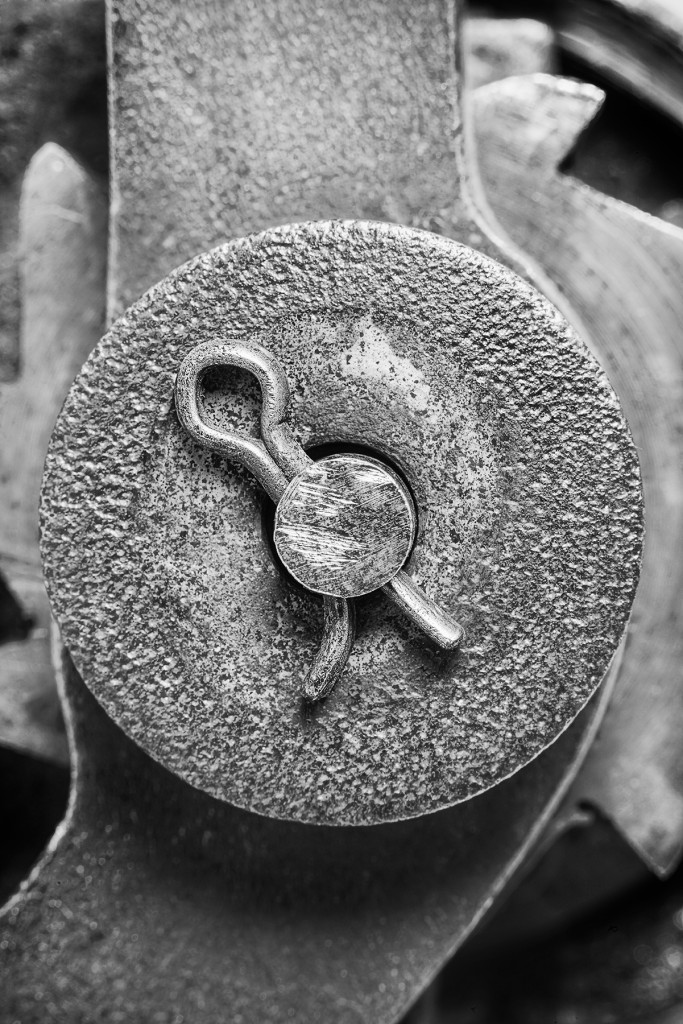The cotter pin, also sometimes called a split pin, is piece of metal separated into two tines. The tines are bent outwards in installation, and the cotter pin is used to hold two pieces of metal together where the design implies some movement—or even rotation between—the metal segments that are attached.

While the cotter pin is attributed as an invention of Dr Rudolph Cotter in the 1834, there is little doubt that informal variations of this kind of fastener have been in use ever since the very earliest days of the industrial revolution, when the need to flexibly but strongly attach two pieces of metal became important—probably the 1750s or 1760s.
As such, the cotter pin is a great symbol and proxy for the good side of industrial humanity, namely the inventiveness and improvisational ability with which as a species we can approach the mechanical universe. It’s a simple but supple solution, strong, and easy to implement with materials at hand.
The cotter pin shown is at one end of a counting device, probably used in a 19th century industrial assembly line.
I wanted to use my wonderfully sharp Zeiss Otus 85mm lens to photograph the small cotter pin up close and personal, but I needed to get a little closer. So I used an old Nikon PN-11 52.5mm extension tube (Nikon has long since discontinued this part). I retrofitted the extension tube with a tripod collar and tripod plate, which helped to balance the Zeiss Otus 85mm f/1.4, which is a truly extraordinary lens with a weight to match the quality of the optics.
Exposure data: Nikon D810, Zeiss Otus 85mm f/1.4, Nikon PN-11 52.5mm extension tube, 5 seconds at f/16 and ISO 64, tripod mounted.
Related story: Workbench.